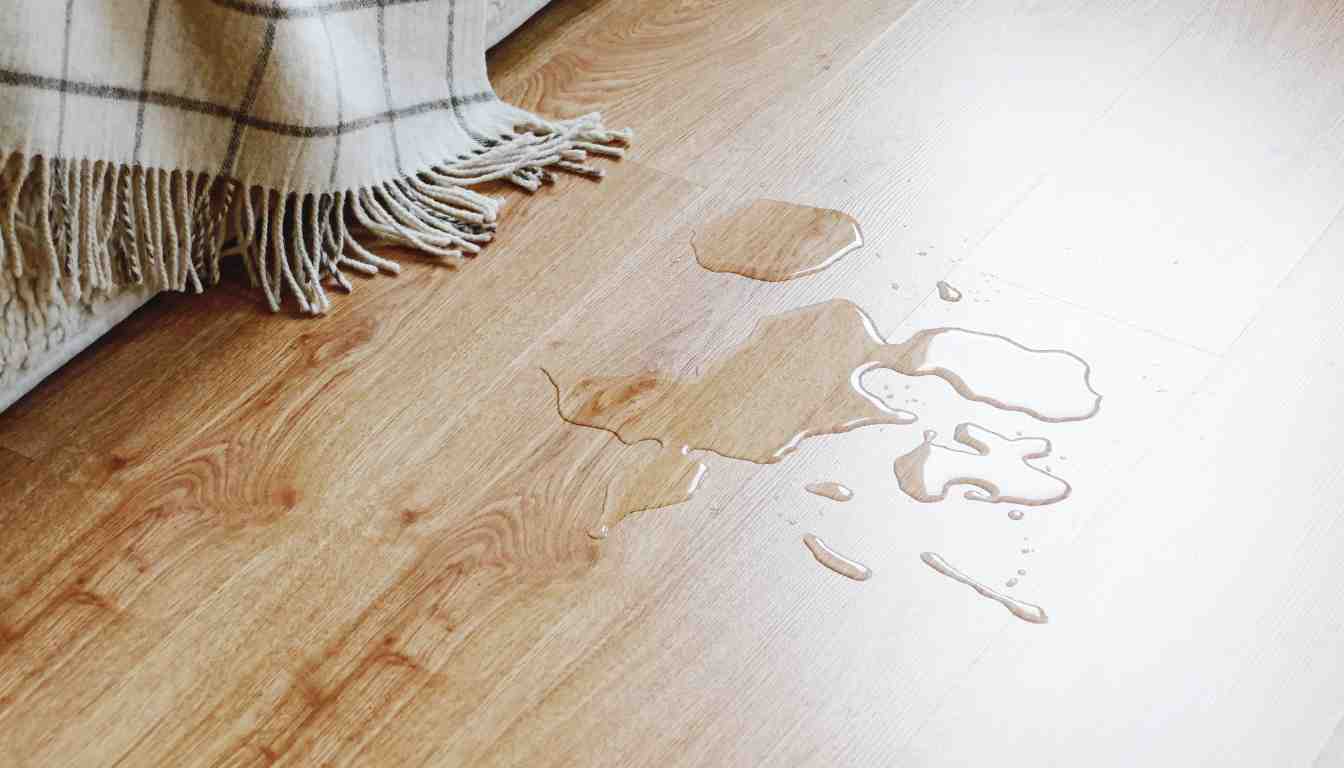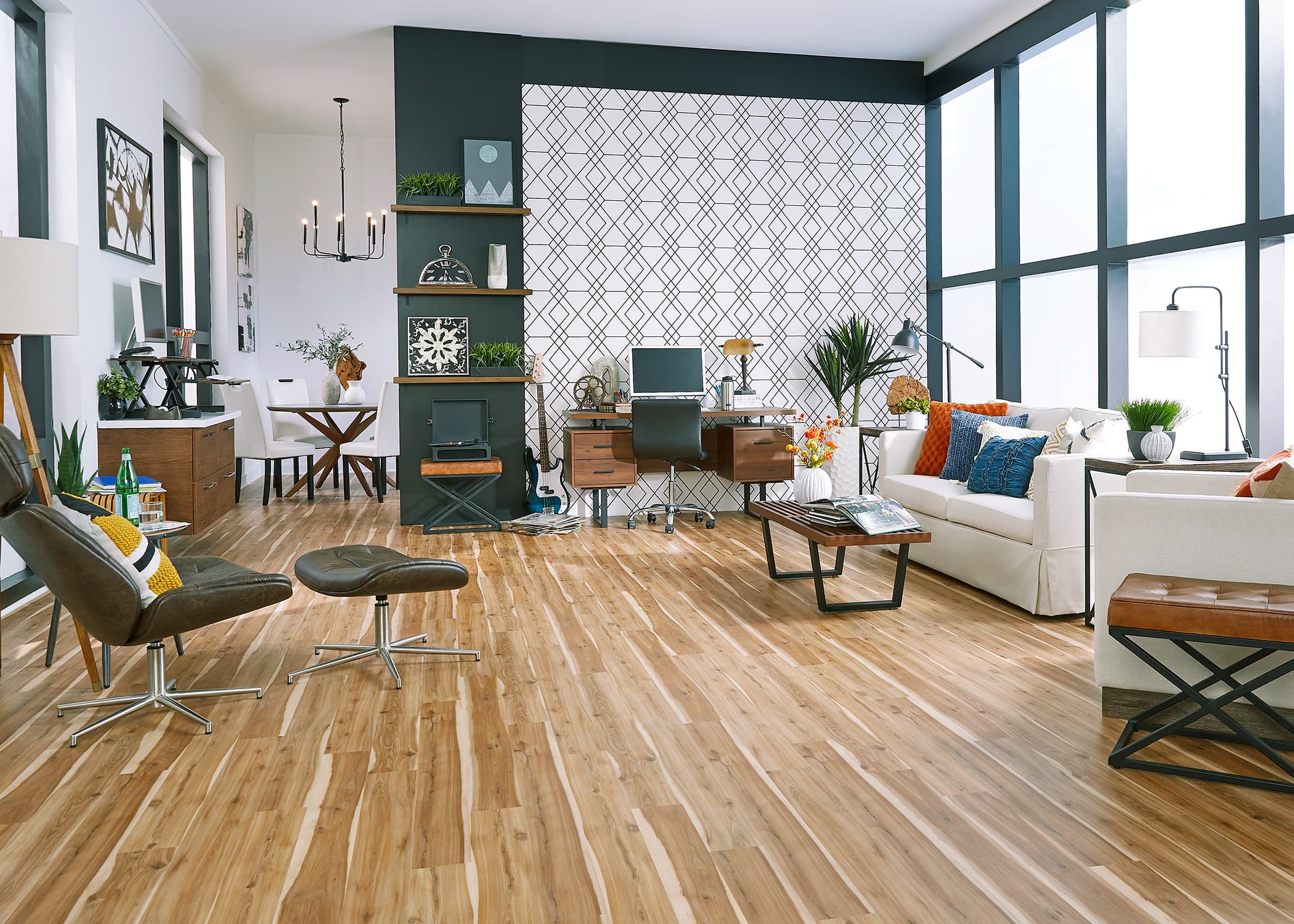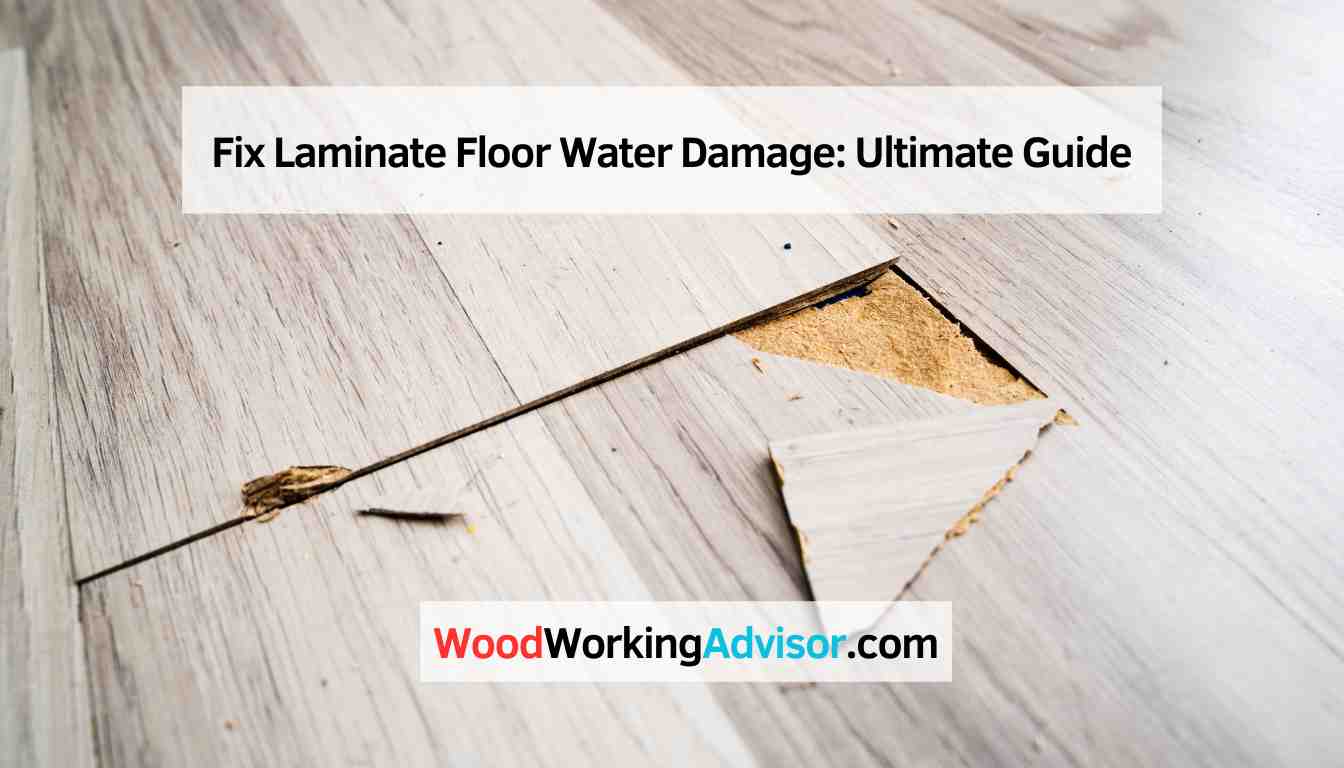To fix laminate floor water damage, first remove the affected planks and dry the area thoroughly. Then, replace the damaged planks with new ones.
Overview Of Laminate Flooring Water Damage
Laminate flooring water damage can cause bubbling and lifting, leading to mold growth. To fix it, identify the cause, dry the area thoroughly, and replace damaged planks promptly. Prevention is key to avoiding further issues with your laminate floors.
Causes Of Laminate Flooring Water Damage
Laminate flooring is a popular choice for many homeowners due to its cost-efficiency and durability. However, just like any other type of flooring, laminate is susceptible to water damage. Understanding the causes of water damage will help you take the necessary steps to prevent it from occurring in your home.
1. Poor installation: Improper installation of laminate flooring can leave gaps or cracks that allow water to seep through. It is crucial to hire a professional installer who can ensure proper sealing and tight fitting of laminate boards.
2. Water leaks: Whether it’s a plumbing leak or a leak from a nearby appliance, water leaks are a common cause of laminate flooring water damage. Even small leaks can lead to significant damage over time if not addressed promptly.
3. Flooding: Natural disasters or plumbing failures can lead to flooding, causing extensive water damage to laminate floors. In such cases, it is essential to contact a professional water restoration service to assess the damage and start the drying process immediately.
Signs Of Water Damage In Laminate Flooring
Water damage to laminate flooring is not always immediately visible. However, there are several signs that can indicate potential water damage:
- Warped or buckled laminate boards: When laminate boards come into contact with water, they can warp, buckle, or lift at the edges. This is a clear indication of water damage and should be addressed promptly to prevent further damage.
- Visible stains or discoloration: Water stains or discoloration on the surface of laminate flooring can indicate water penetration and should be inspected further.
- Musty odor: A persistent musty smell in the room where the laminate flooring is installed can indicate the presence of mold, which thrives in moist environments. Mold is a serious health hazard and should be addressed immediately.
- Soft or sponge-like texture: If you notice that certain areas of your laminate flooring feel soft or spongy when walked on, it could indicate water damage that has caused deterioration of the subfloor.
Identifying these signs of water damage in laminate flooring early on is crucial to prevent further damage and costly repairs. If you suspect water damage, it is recommended to consult with a professional flooring contractor who can assess the extent of the damage and recommend the appropriate course of action.

Repairing Water-damaged Laminate Flooring
If you’re dealing with water damage on your laminate flooring, don’t worry – there are steps you can take to repair it. Start by assessing the situation, cleaning up any water, and using a dehumidifier to dry out the flooring.
Then, inspect and dry the laminate completely before considering using a laminate floor repair kit for any scratches or chips.
Assessing The Damage
When it comes to repairing water-damaged laminate flooring, the first step is to assess the extent of the damage. Take a close look at the affected area and look for signs of warping, discoloration, or mold growth. If the damage is limited to a few boards, you may be able to salvage the rest of the floor.
To assess the damage, consider the following:
- Is the flooring laminate or engineered wood? Laminate flooring is made up of layers of synthetic materials, while engineered wood has a real wood veneer over a plywood core.
- Is the damage localized or widespread? If the water damage is only present in one area, you may be able to replace the damaged boards without replacing the entire floor.
- How long was the water present? The longer the water was in contact with the floor, the higher the chances of irreversible damage.
Cleaning And Drying
Once you have assessed the damage, the next step is to clean and dry the affected area. This is crucial to prevent further damage and the growth of mold and mildew.
To clean and dry the water-damaged laminate flooring, follow these steps:
- Start by removing any standing water using a wet/dry vacuum or absorbent towels.
- Next, use a mild detergent or laminate-floor-specific cleaner to clean the surface. Avoid using excessive water or abrasive cleaners, as they can damage the flooring further.
- After cleaning, thoroughly dry the area using fans and dehumidifiers. Ensure that the subfloor is also dry to prevent any moisture from seeping back into the laminate flooring.
Replacing Damaged Boards
If the water damage is extensive or the affected boards are beyond repair, it may be necessary to replace them. Here’s how you can do it:
- Start by removing the baseboards around the damaged area to allow for easier access.
- Carefully remove the damaged boards using a pry bar or a chisel. Be cautious not to damage the surrounding boards.
- Measure and cut the replacement boards to fit the space. Remember to leave a small gap for expansion.
- Apply a recommended laminate flooring adhesive to the groove of the replacement boards and firmly press them into place.
- Once the replacement boards are installed, reinstall the baseboards.
By following these steps, you can effectively repair water-damaged laminate flooring and restore the beauty of your floor. Remember to take immediate action when you notice any signs of water damage to prevent further complications.
Tools And Materials For Laminate Floor Repair
Laminate floor water damage can be a homeowner’s nightmare, but with the right tools and materials, repairs can be done effectively.
Types Of Repair Kits
When dealing with laminate floor water damage, specific repair kits can make the process smoother:
- CalFlor Hard Surface Repair Kit
- Floor and Furniture Repair Kit
Essential Tools For Laminate Floor Repair
Having the following tools is crucial for repairing water-damaged laminate floors:
| Tool | Usage |
|---|---|
| Circular Saw | Cutting damaged planks |
| Hammer and Block | To fix loose planks |
| Utility Knife | Trimming edges of laminate |
| Measuring Tape | Precision measurements |
| Replacement Planks | Matching existing flooring |
Prevention And Maintenance Tips
To fix laminate floor water damage, start by removing the affected boards and drying the area thoroughly. Then, replace the damaged planks with new ones. Prevent further damage by addressing any causes of the water damage, such as leaks or spills.
Preventing Water Damage To Laminate Flooring
To prevent water damage to your laminate flooring, it’s essential to take proactive measures.
Here are some effective tips to prevent water damage:
- Place doormats at entrances to trap moisture and dirt
- Avoid using excessive water when cleaning the floor
- Use moisture barrier underlayment during installation
- Wipe up spills immediately using a dry cloth
- Regularly inspect and maintain the seals on kitchen and bathroom fixtures
Regular Maintenance Practices
Regular maintenance is crucial for preserving the integrity of your laminate flooring.
Here are some essential practices for maintaining laminate floors:
- Regularly sweep or vacuum the floor to remove debris
- Use a damp mop with a mild cleaner for routine cleaning
- Ensure proper ventilation in areas prone to moisture buildup
- Inspect for any signs of water damage or leaks and address them promptly
- Consider using protective pads under heavy furniture to prevent indentations
Faqs On Laminate Floor Water Damage
When it comes to dealing with laminate floor water damage, it’s important to understand the best solutions for common issues. Whether it’s dealing with bubbled flooring or addressing lifting and buckling, knowing how to address these concerns can save you time and money in the long run. In this guide, we’ll address some frequently asked questions about laminate floor water damage and provide practical solutions to fix these problems.
How To Fix Bubbled Laminate Flooring
If your laminate flooring begins to bubble, there’s, unfortunately, no way to repair the affected boards, but you can prevent the problem from getting worse.
- Regularly inspect the flooring for signs of bubbling.
- Address any spills or leaks promptly to prevent water from seeping beneath the flooring.
- Consider using area rugs in high-traffic areas to minimize the impact on the flooring.
Solutions For Lifting And Buckling Laminate Floors
When water gets trapped under the boards, it creates a dark, moist environment that’s ideal for the growth of mold. Eventually, this mold will creep upwards from the sub-floor to the top of the surfacing. At this point, without a doubt, you’ll need a new flooring installation.
- Identify the source of the water damage and fix any leaks or spills.
- Use a dehumidifier to help dry out the affected area.
- Consult a professional for proper assessment and replacement of the damaged laminate flooring.

Credit: www.wordofmouthfloors.com
Frequently Asked Questions On Fix Laminate Floor Water Damage
Can You Fix Bubbled Laminate Flooring?
Bubbled laminate flooring can’t be repaired, but prevent further damage. Seek professional help for replacement.
What Happens When Water Gets Under Laminate Flooring?
Water trapped under laminate flooring creates a moist, mold-friendly environment. Mold may grow, requiring new flooring installation.
Can You Fix Laminate Flooring That Is Lifting?
To fix lifting laminate flooring, find the cause and remove affected planks. Dry the area and use replacement planks to reinstall.
How Do You Fix A Buckling Laminate Floor?
To fix a buckling laminate floor, follow these steps:
1. Remove molding or baseboards.
2. Take out damaged floorboards.
3. Install new laminate boards.
4. Adjust spacing.
5. Ensure area is dry before repairing.
Conclusion
Revive your laminate floor with these simple water damage repair steps. Trust this guide for a seamless restoration process and expert tips for long-lasting results. Act promptly to prevent further damage and enjoy a beautifully restored floor. Say goodbye to water damage worries!


